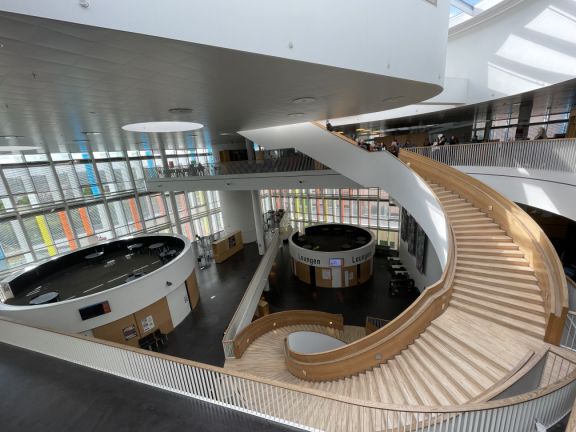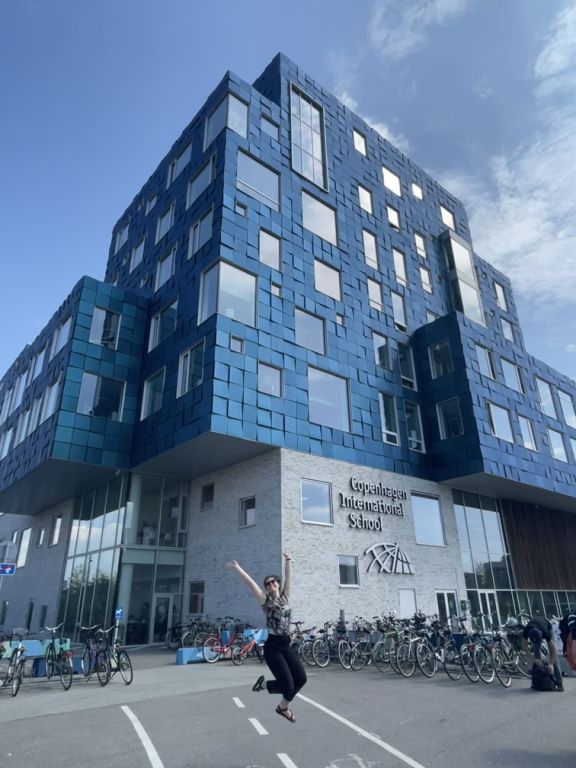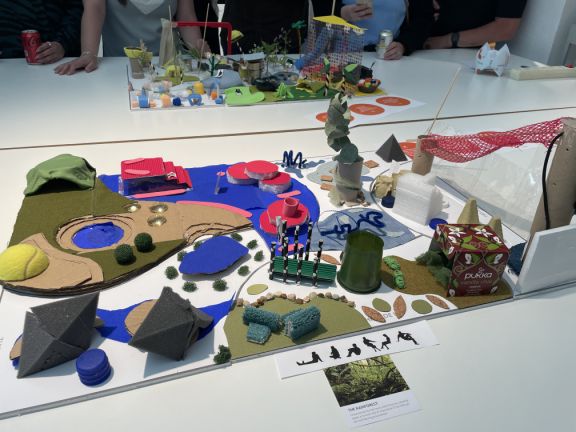-by Ilona Smolders-Versteeg and Yona Bleijenburg,secondary Dutch teachers

In Denmark, students all follow the same curriculum until they are 15 years old, after which they can choose to go to a Gymnasium (High School, comparable to the Diploma Programme) of their choice. We have visited a couple of typical Danish Gymnasia, like Ørestad Gymnasium, which had a spectacular open space design. After finishing when they are 18 years old, students have the choice to partake in the Danish tradition of spending some time at a Højskole. It's an on-campus experience where students spend a couple of months to one year living together, being part of a community and choose from courses like Leadership or, like at the Roskilde Festival Højskole we visited, Music Production.
Malmö
Only a 30-minute train ride away, some teachers spent a day in the Swedish city of Malmö to get yet another perspective on education. We visited two schools that were focused on (professional) sports. One of the schools was located inside the stadium of soccer team FF Malmö. In addition to the normal curriculum, students spend several hours a day training in their sport of choice. The other school we visited, Bryggeriets Gymnasium, offers specialties like fine arts and cartooning but also, most notably, skateboarding as a major course.
Danish School Culture
We have learned about a few other interesting aspects of the Danish school culture:
- Danish schools can be partially funded by companies.
- It differs between Danish schools how many hours a teacher teaches, which means a full-time job could be more, or less teaching hours in one school or the other.
Copenhagen International School

The school that we, as ISU teachers, were most interested in, was Copenhagen International School (CIS). This school is located in a harbour area, which provides a beautiful view from classrooms. The mission of CIS is “Educating champions of a just and sustainable world”, and so you see a focus on sustainability everywhere in their impressive building. For example, the exterior consists of 1200 solar panels that provide for approximately a third of the school’s energy use, there are greenhouses on the roof and the lights automatically adjust to the light intensity outside. Starting in PYP, children learn how to live more sustainably through practice-based learning.
Listen to your students
After a tour of a group of DP students (who gave us the golden tip: “Listen to your students!”), vice-principal Katie Ham told us more about education at CIS. For example, they use a 9-day schedule as a diversion for both students and teachers, and part-timers only have to attend meetings part-time. A mental health coach is present for the students. In addition, CIS organises an annual trip to a school in Peru, with whom they have been collaborating for fifteen years.
Workshop at Rosan Bosch Studio

On Thursday morning, the whole group followed a workshop at Rosan Bosch Studio. Rosan Bosch is a Dutch designer of playful learning spaces, located in Copenhagen. She works on different projects with schools worldwide to make schools look less like prisons (square, closed off rooms) but instead, and creates open, inspiring learning spaces. Bosch’ designs include six different types of ‘spaces’:
- Cave: a space to work individually, undisturbed
- Mountaintop: a space for plenaries, both in bigger and smaller groups
- Campfire: a space for collaboration
- Watering hole: a space to get inspired and share inspirations
- Hands-on: a space for more practical tasks, working with the hands
- Movement: a space to be physically active
In groups we designed different learning environments for each of these mentioned types of spaces. A very ‘hands-on’ and ‘campfire’-like learning activity!
What did we learn?
What stood out for us in our week-long trip to Scandinavia, was the strong focus on both sustainability (made explicit in almost every school visited) and the sense of community within the schools. Community-building was most strongly represented in the Roskilde Festival Højskole. The principle of the højskole, in our opinion, gives young adults the opportunity to develop as a more well-rounded human being, and we think implementing this in the Dutch system would be very beneficial.
The visit also made us think about how sustainability can play a role in our education in small and large ways and how ISU can learn from the examples we saw in Copenhagen.
